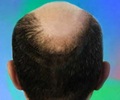Hair Replacement Surgery
Hair replacement surgery is more than seven decades old now, and it has evolved from a rare procedure, used only for people severely deformed from burns or accidents, to a common, safe, outpatient procedure that is done under local anesthesia and takes usually 4-5 hours. When done by a competent surgeon, it can make your bald spot start growing hair again in a completely natural way.
When are men good candidates for hair transplantation?
Hair surgery is an option for you if your hair loss is caused by androgenetic alopecia manifesting in male pattern baldness. In other words, if it is genetic and if you are losing hair in the way typical for men – with hair thinning or baldness in the top and crown with hair growing in the lower sides and back of your head. If you are losing hair because of any illness or medical treatment (like chemotherapy) or in random patches (alopecia areata) or if you lose all of your hair on the head (alopecia totalis), hair replacement surgery will not work for you.
The area of hair growth on the sides and back of your head (‘donor area’) also needs to be dense, and the hair itself should be thick and of good quality.
Young men (less than 30 years) with balding are usually not good candidates for a transplant because their hair loss is likely to continue. Surgery can leave them with an unnatural top-filled and sides-scarce look.
To get the best results from your surgery, your baldness needs to have stabilized. While it is very difficult even for an experienced doctor to predict the course of hair loss, surgery is not a good option when you suddenly lose a lot of hair, because sudden hair loss may be due to non-genetic reasons that will not respond to surgical treatment. But again, surgery needs to be done before the baldness has progressed too far if results are to look natural.
You need an experienced and knowledgeable doctor to be able to strike the right balance and make you look better. He should be concerned about your hair loss situation rather than about just performing the surgery. Some doctors routinely prescribe a few months of drug treatment for hair loss before performing surgery. Others tell their patients up front that they may need several hair transplants to get the look they want and keep pace with the changing pattern of their baldness.
The standard techniques
Hair replacement surgery, from the time it began, has consisted of transplanting hair from a part of your head that grows it well to the part that is bald. This utilizes a feature of hair follicles that transplant surgeons call donor dominance – when hair follicles are transplanted they continue to grow the same type of hair they did at their natural locations. So follicles transplanted from the back of your head to the top retain their tendency to resist baldness, and they do not eventually shrivel and die as follicles on the top usually do.
Follicular unit transplantation (FUT) is the standard technique of hair transplantation today. Follicles are the natural units of hair growth, and transplanting them gives the most natural results. The surgeon inserts graft hair follicle by follicle to the bald areas. The follicular grafts are harvested from the area of your head that still has thick hair growth, either by cutting a thin strip of skin and then dissecting it under a microscope into single follicles (strip excision) or by shaving the area of thick hair growth and extracting the follicles one by one with special instruments (follicular unit extraction or FUE).
Strip excision leaves a scar that the surgeon will stitch together and will be hidden with your own natural hair. FUE leaves no scar, but it yields fewer viable follicular grafts. Surgeons have even developed techniques to divide a follicle so the hair growing from it will be finer.
Some follicles grow only a single hair, but others grow up to four strands of hair. The surgeon inserts the follicular grafts into tiny incisions made in the bald area. He has to pay particular attention to the angle of insertion (hair rarely grows straight up on the head, and is at a different angle to the skin in different areas of the head), the spacing (natural hair is irregularly spaced, and the surgeon should make sure the frontline hair especially is irregular though closely spaced for the most natural results), and the thickness of the hair (the hairline tends to have finer hair, so the follicles growing only single strands need to be placed there, while follicles growing thicker and more number of strands of hair are placed further to the back).
Techniques you should avoid
Some surgeons use larger grafts, either micrografts (natural groups of follicles) or plugs (a pencil-eraser sized group of follicles). These are older techniques, and they can end up giving you something like a doll’s hair. Though these techniques usually will be cheaper, they will not look natural.
Other surgeons use hair from other parts of the body, or they may suggest artificial hair fibers. Artificial hair fibers carry risk of infection. Body hair rarely grows well when transplanted to the head, and sometimes it continues to smell like its natural place of growth.
You also cannot transplant hair from another person to the top of your head (unless he is an identical twin), because your body will reject the hair. The risk of taking anti-rejection drugs for your hair is greater than any cosmetic or psychological benefit you will get from new hair on your head.
Some doctors continue to advertise laser hair transplants, when the surgeon uses a laser beam to prepare the place for the insertion of the graft follicles. But this is another technique that has poor results. Laser hair transplantation should not be confused with the laser comb, an FDA-approved treatment for hair loss.
Transplanting flaps, or large sections of hair-growing scalp¸ to the bald area will often leave scars and continuous pain or a feeling of tightness in the head. While you will have an immediate head full of hair, the direction of the hair growth will be unnatural. This will happen even if the surgeon uses ‘ballooning’ to expand the skin on your scalp before the operation.
You are probably better off being bald than using any of these techniques. If you do, you will almost certainly be going for another surgery to repair the damage these have done.
Choosing a good provider
You need to ask your surgeon what technique he uses. Anything other than follicular unit transplantation with strip excision or follicular unit extraction for the harvesting of grafts is not acceptable. This is the most proven technique with the most natural looking results.
Check also if the surgeon is certified by your local or national medical board, and how much experience he has treating your kind of baldness. Ask for before-and-after photos of his patients, and ask to meet them. Choose a surgeon who has experience treating men with baldness.
Cost is not a good indication of the competence of your surgeon. Many clinics that specialize in hair restoration surgery may charge less than other establishments with less experience in the procedure that need to charge more to cover costs.
Rewards and risks
You need to be realistic about the results you expect. For most men, a hairline with slight recession in the forehead and temples looks good after surgery. Your surgeon will consult with you prior to surgery about the hairline you want, and if you insist on an adolescent hairline, you will just end up looking unnatural for your age, and it will be easier for other people to guess that you have had hair surgery.
Besides the number of hair available, the color of your hair and how it contrasts with the color of your skin, its coarseness or fineness, and whether it is curly or straight will affect your results. People with less contrast between their hair and skin color (for example, light-skinned people with blond hair or dark-skinned with black hair) and people with coarse and curly hair look best after a hair transplant.
Hair transplant surgery, like all surgery, has some risks. Sometimes there is too much bleeding, or an infection. The scar may take time to cure or it might be too visible and not hidden by your hair. You may have swelling around your eyes and on your forehead. Sometimes the grafts simply die and no hair will grow, and the surgery will be a failure.
It is also not true that surgery is always cheaper compared to years of taking hair growth medicines like minoxidil and finasteride, or compared to the cost of maintaining and replacing hair systems. This is because many men find they need to have more than one session of surgery to get results they like and to keep step with progressive hair loss. Also, if you choose someone incompetent, you may end up looking so bad you need to have more operations to repair the original procedure. You may also need to keep taking medicines to help the transplanted hair grow.









Thanks for sharing information.About hair replacement. #Shinehairstudio
I am in Mumbai. Wanted to go for this treatment.
Are these hair system available in India with kind of clinics fitting them. What is the cost of such application at what frequency?
This article provides a detail description of hair replacement techniques and its benefits. Hair relacement is an effective way of removing baldness problem. In this technique doctors replace hair from dense growth area to the bald area. Patients must always approach to highly experienced doctors for hair treatment.
what is the cost of hair arrangement by silicon systems